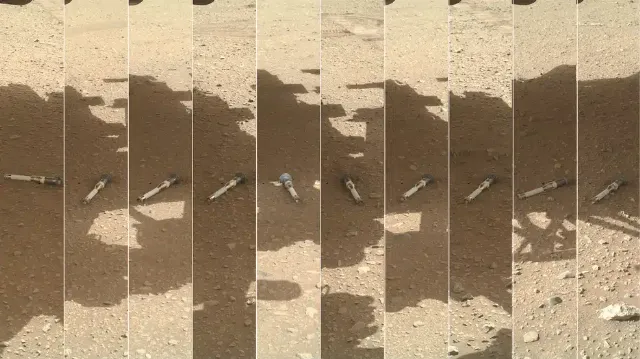Earlier, seven different companies announced that they would be able to take capsules with samples collected by the Perseverance rover from the Red Planet. Now, a new strong player has suddenly appeared in this competition.
There are nine capsules with soil in the Martian crater Ezero ("Lake"), and another dozen and a half are stacked inside the Perseverance planetoid, which has been operating in the crater since 2021. He collected and continues to collect all these samples using his drilling rig. In total, the rover will have to fill 38 capsules. Which ones will fly to Earth, it will become clear when the time comes to pick them up: this will be decided depending on the state of Perseverance by that time.
These will be the first soil samples delivered to our planet from another planet. Moreover, scientists suspect that they may contain traces of extraterrestrial life.
In general, it is necessary to take samples and overload them into a small rocket that will have to launch from Mars into space, and there a small cargo ship will already be waiting for them: a container with capsules will move into it and go to Earth.
Since NASA set itself this titanic task a few years ago, it has become clear that it risks being impossible. Firstly, the necessary spacecraft have not been built, and, according to recent forecasts, their creation may take about 20 years. In this scenario, the mission becomes meaningless: in the next 20 years, the first human flights to Mars are already expected. Secondly, the cost of the project turned out to be more than twice as much as expected: 11 billion dollars against the originally pledged five.
Therefore, in April 2024, the National Aeronautics and Space Administration of the United States turned to American space companies for help: asked them to think over and submit their proposals for faster and less expensive delivery of Martian soil. In June, among all those who responded, seven companies were selected for the competition, including SpaceX, Blue Origin, Lockheed Martin, Aerojet Rocketdyne. They decided to finance the development of a full-fledged mission concept, which they will have to submit in 90 days.
Now, three months after the selection of the contestants, another one suddenly appeared among them: Rocket Lab, which launches satellites on its Electron light rocket and develops the Neutron medium-heavy carrier. According to calculations, it will be able to lift from eight to 15 tons of payload into low Earth orbit. The company suggests using this rocket for interplanetary flights as well. It is claimed that one and a half tons of cargo can be delivered to Mars with its help.
According [...] to Rocket Lab, initially NASA did not consider it necessary to include the company in the list of possible mission performers, but now the agency has changed its mind. Rocket Lab claims that it can create a small rocket to lift 30 capsules with a total weight of two kilograms into near-Martian orbit. To send a lander with this rocket and — separately — an orbiter to Mars, it is proposed to launch two Neutron rockets with an interval of two weeks.
The company assures that it can organize all this for only two billion dollars, and no later than 2028. If successful, the samples will arrive on Earth in September 2033, and perhaps even two years earlier.
It should be noted that only the Aerojet Rocketdyne rocket engine development company can compare with Rocket Lab in terms of the detail of its ideas for the delivery of Martian soil. In particular, she suggests creating a lander so light that it can be lowered to the surface using the existing Sky Crane system. Cables are involved in it — this is how the Curiosity and Perseverance rovers successfully launched to Mars.

